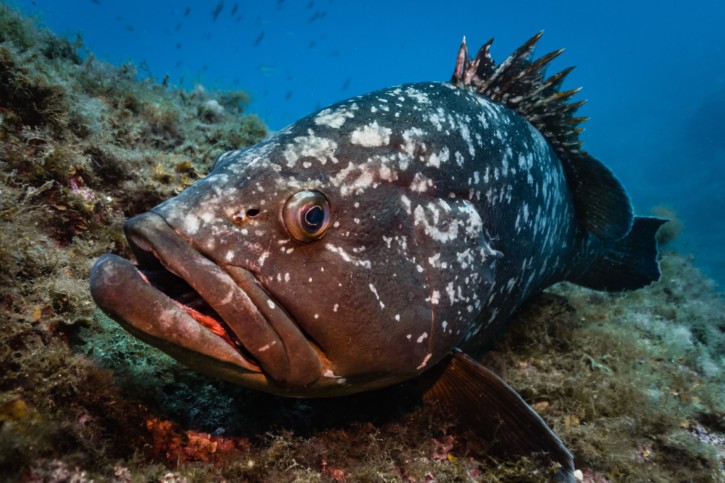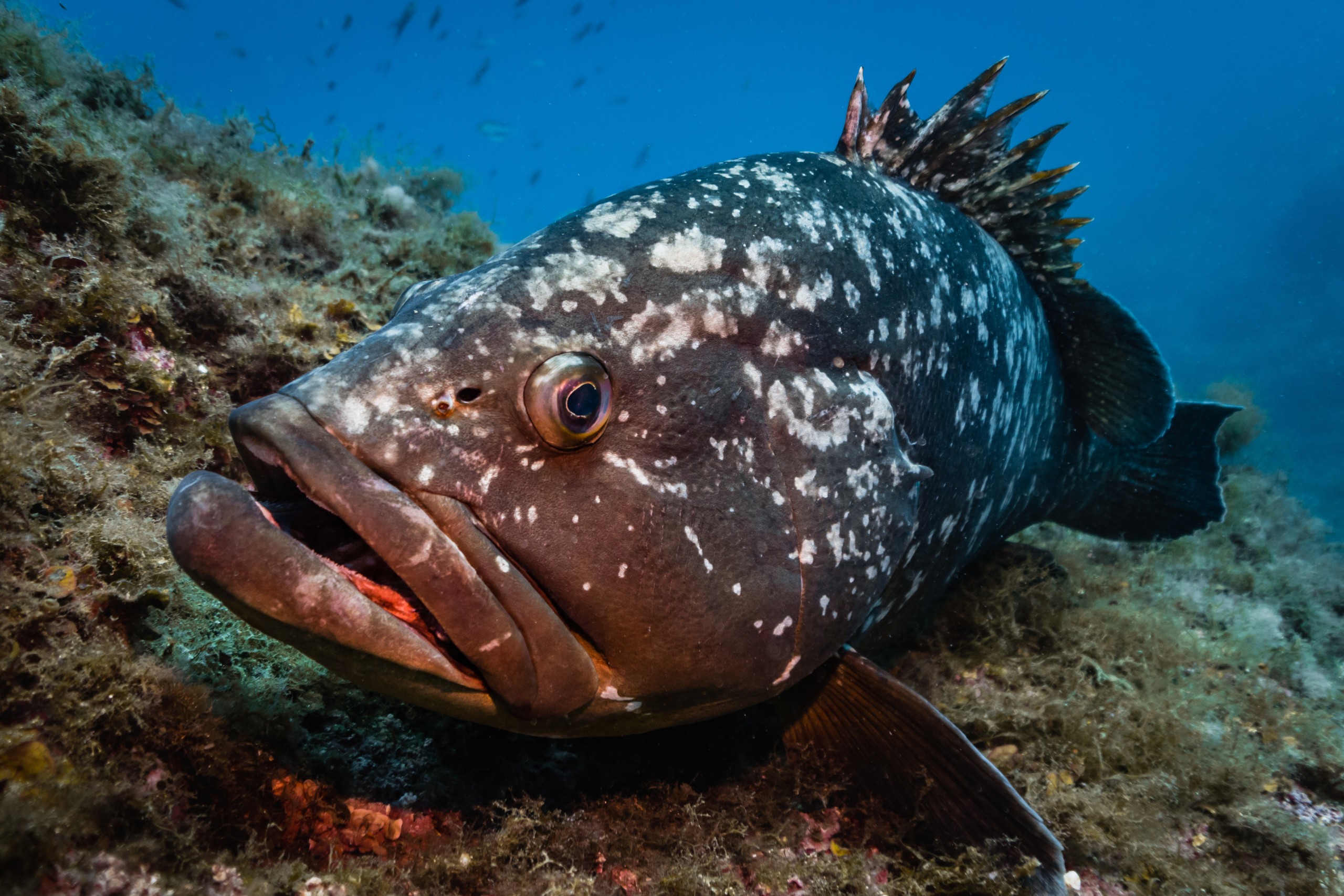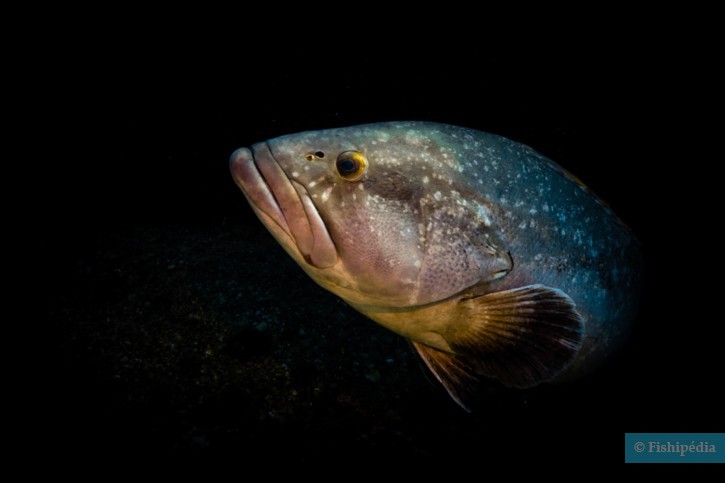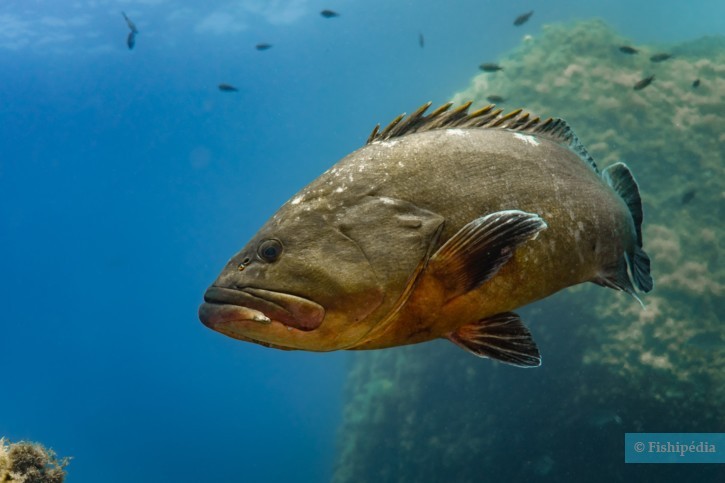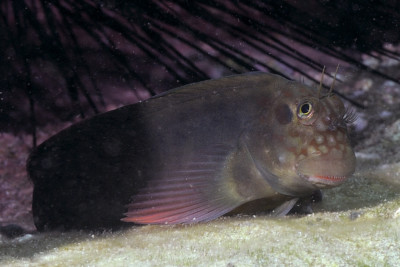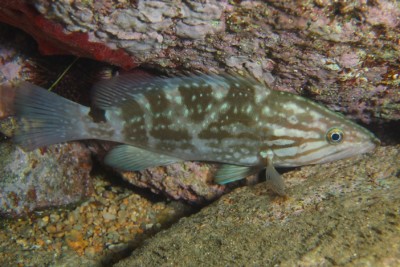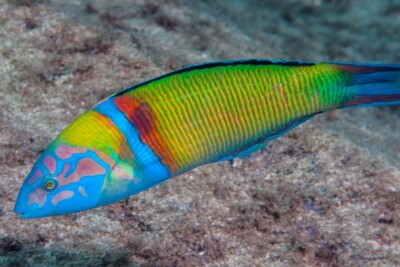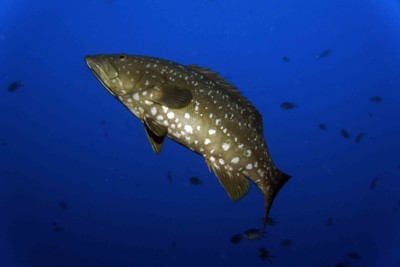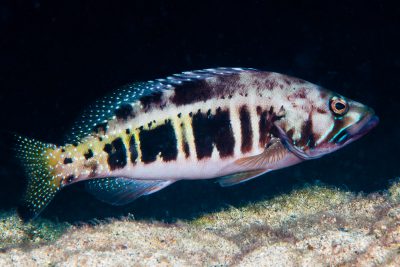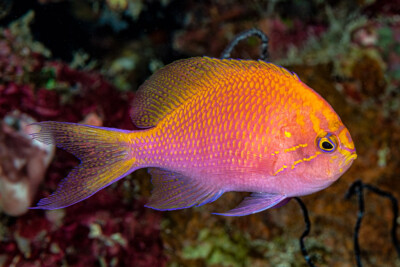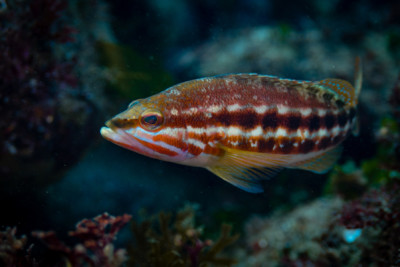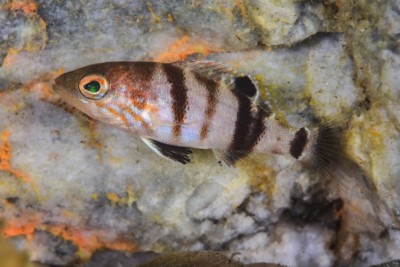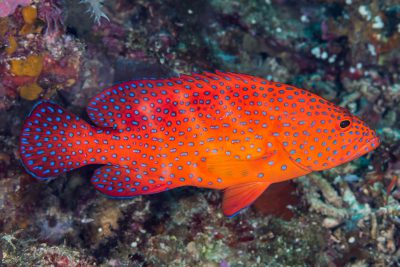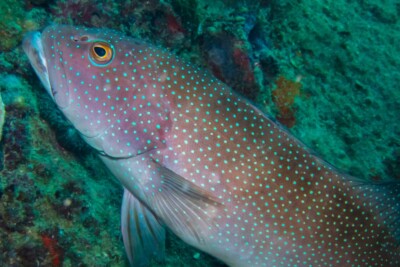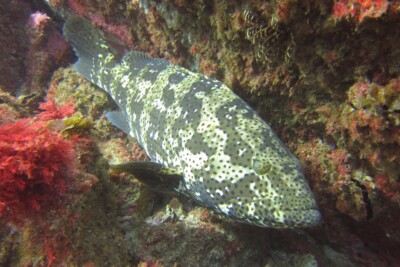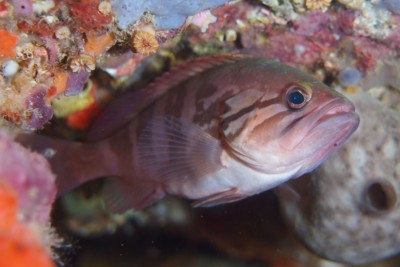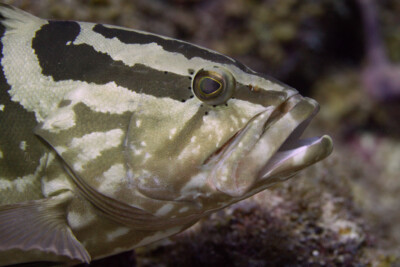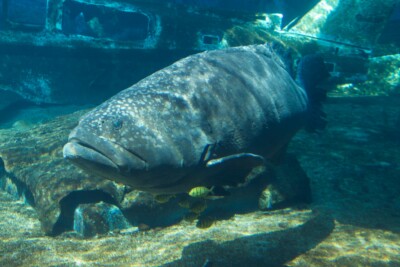Introduction
Epinephelus marginatus is commonly called "dusky grouper" in the Mediterranean. This discreet predator is among the major predators of shallow rocky areas.
Highly prized for its flesh, this species was long a preferred catch for fishermen. It has local names in many languages such as "garoupa" in Brazil, "cernia bruna" in Italy, "mero" in Portugal, or "mérou rouge" in Tunisia.
Today, the dusky grouper is considered threatened by the IUCN, mainly due to overfishing throughout the twentieth century. In some protected areas, such as Corsica, populations seem to be recovering.
This sheet is currently being prepared. The texts currently proposed come from our data model or are being drafted. To request priority for this content, you can write to us HERE.
Who is it?
Genus Epinephelus
In 2019, the genus Epinephelus comprised 87 species according to FishBase. These fish are commonly known as "groupers" and belong to the "serranid group" (Serranidae).
They are territorial carnivores with elongated and robust bodies. They have imposing heads with canines in the front of their jaws and protractile mouths. All species possess 10 or 11 dorsal spines.
Most species are found in coral reefs or rocky areas, with some exceptions (such as E. aeneus, E. bruneus, or E. areolatus) living in sandy, muddy, or silty bottoms. Adults are typically observed at depths ranging from 10 to 200 meters. Most Epinephelus are recognized as protogynous hermaphrodites, meaning they are born as females and become males as they grow. However, not all females may change sex, and some males may not go through this commonly accepted stage.
These fish are highly valued commercially for consumption and recreational fishing, but they are vulnerable to overfishing due to their slow growth, late maturity, and the formation of reproductive aggregations. Overfishing, particularly targeting mature individuals, can lead to sex-ratio imbalances and affect reproduction. Several groupers are now the subject of aquaculture farms (especially E. coioides and E. malabaricus).
According to the IUCN, overfishing and pollution have already caused a significant decline in the populations of many groupers, and several species are endangered.
Morphology
-
Average size80 cm
-
Maximum size140 cm
-
Longevity50 year
-
Mimicrystone
-
Patternmottling
-
Average size80 cm
-
Maximum size140 cm
-
Longevity50 year
-
Mimicrystone
-
Patternmottling
How to recognize This fish ?
The dusky grouper has a head and body of dark reddish or grayish color on top. The belly is lighter, sometimes yellowish. It has white or beige spots visible on the body and head. The odd fins are dark brown, often with a white margin at the end. The pelvic and pectoral fins are dark, often yellowish at their base.
Like other groupers, this species has spines on the fins, 11 on the dorsal fin and 3 on the anal fin. Simulations estimate a maximum age reached around 35 years, with a common length of 120 cm.
Sexual dimorphism
Behaviour & Life cycle
-
dietcarnivorous
-
Sociabilitysolitary
-
territorialYes
-
Way of livingdiurnal
The adult dusky grouper lives solitarily, outside of the breeding periods. Established in rocky areas, it is territorial for much of its time. This true carnivore hunts by ambush and is among the major predators in its habitat. Octopuses and reef-associated fish are its preferred prey.
It is generally peaceful with non-territorial fish that are not potential prey. However, it is aggressive towards other territorial species that share its type of shelter. It is also hostile towards its conspecifics, especially other males.
Reproduction
-
Reproductionovipare qui pond en eau libre
-
Hermaphroditeprotogynous
All individuals change sex. The dusky grouper is always born female, then changes into a male as it grows.
Sexual maturity in females occurs around 5 years old. Then, the transformation into males occurs around 10-15 years old. Beyond this age, all individuals are males.
Harmless species
Origin and distribution
Geographic distribution & Conservation
The dusky grouper is one of the most widely distributed fish in the world. It is found on both sides of the Atlantic Ocean, throughout the Mediterranean Sea, and around the southern tip of South Africa. It has been recorded in the coastal waters of Mozambique and Madagascar. It is known on the east coast of Brazil, Uruguay, and Argentina.
Well present throughout the Mediterranean coastline, with observations made (among others) in Spain, France, Italy, Greece, Lebanon, Israel, Algeria, and Madeira, it is now the subject of conservation plans because its populations had nearly disappeared during the 20th century.
Conservation status of populations (IUCN)
What is its habitat?
Natural environment characteristics
-
Temperature10 - 26 °C
-
Depth5 - 100 m
-
FlowMedium and Slow
Biotope presentation
The dusky grouper is most commonly encountered at depths less than 100m. However, it is not impossible to find this fish at other depths.
It lives in rocky areas, usually near large cavities.
Species of the same biotope
To go further
Sources & Contributions
Participation & Validation
The Fishipedia team and specialist contributors are committed to providing high-quality content. However, although the information comes from scientific sources or testimonials from specialists, the cards may contain inaccuracies.

Benoit Chartrer

Julie Magnus

Silvia Gomez
Translation
Translation done with the valuable contribution of our translators, who make this information available to a wider audience. We sincerely thank them for their commitment.
Bibliographic references
- - GBIF
- - FAO Species Catalogue. Vol. 16. Groupers of the world (family Serranidae, subfamily Epinephelinae). - Heemstra, P.C - J.E. Randall - FAO Fisheries Synopsis - 1993.
- - Induction of Female-to–male Sex Change in the Honeycomb Grouper (Epinephelus merra) by 11-ketotestosterone Treatments - Ramji Kumar Bhandari - Mohammad Ashraful Alam - Kiyoshi Soyano - Masaru Nakamura - Zoological Science - 2006.
Scientific partners
Tags
#Serranidae
#Epinephelus
#Mediterranean Sea
#Atlantic Ocean: North Coast of Brazil
#Océan Atlantique Est Afrique - Angulhas
#Océan Atlantique Est Afrique - Golfe de guinée
#Temperate Eastern Atlantic Ocean
#Océan Atlantique Est Afrique - Transition & Cap Vert
#Southwest warm temperate Atlantic Ocean
#Eastern tropical Atlantic Ocean
#Southwest Tropical Atlantic Ocean
#açores
#Corsica
#Canary Islands
#Madère
#Sardinia
#Sicily
Species of the same family
Same genus
Species of the same biotope
